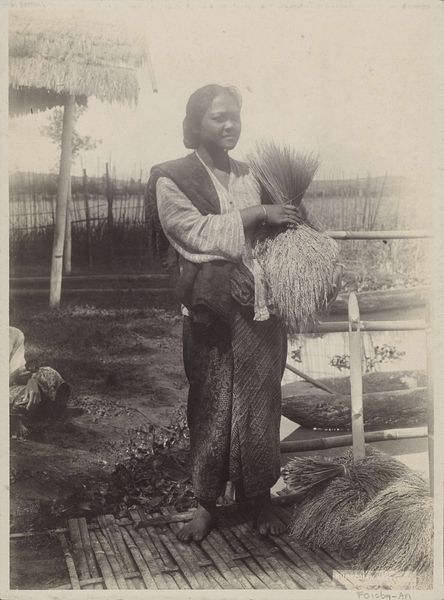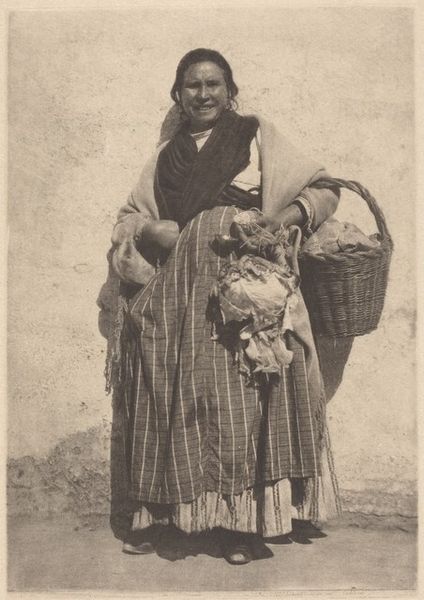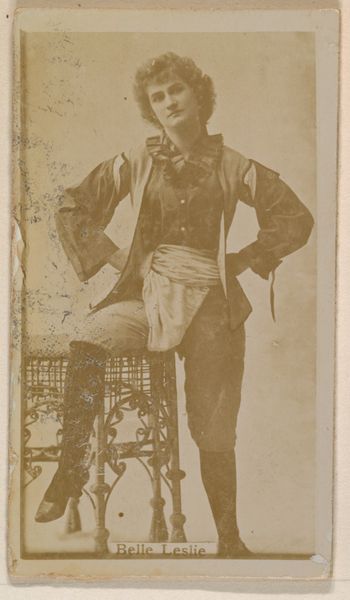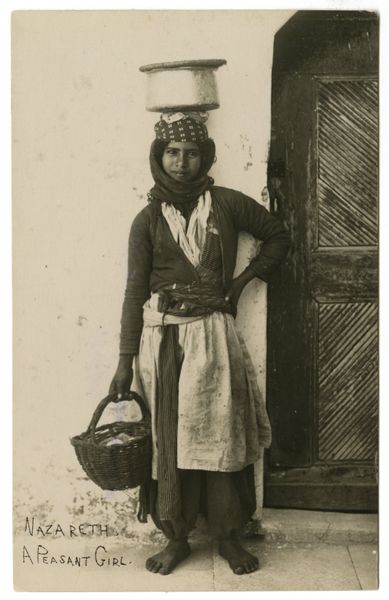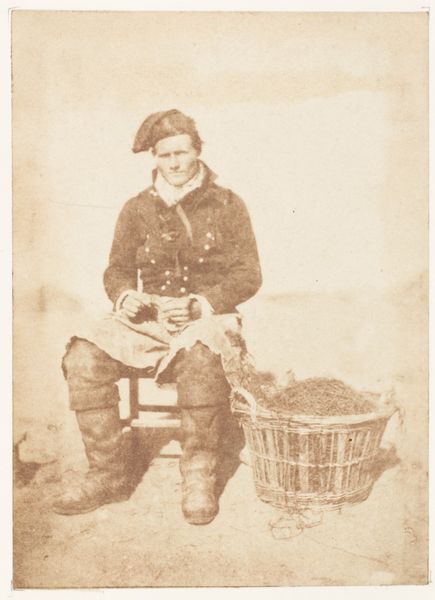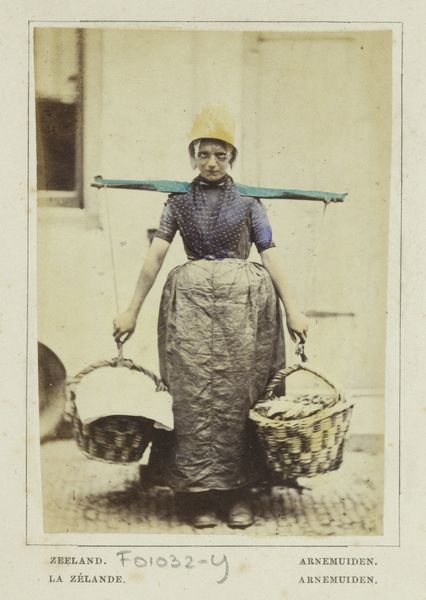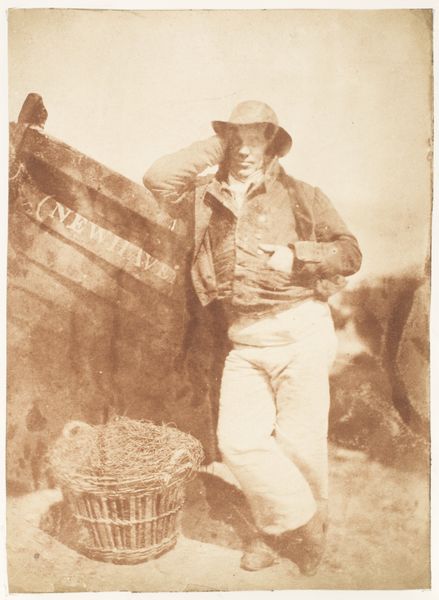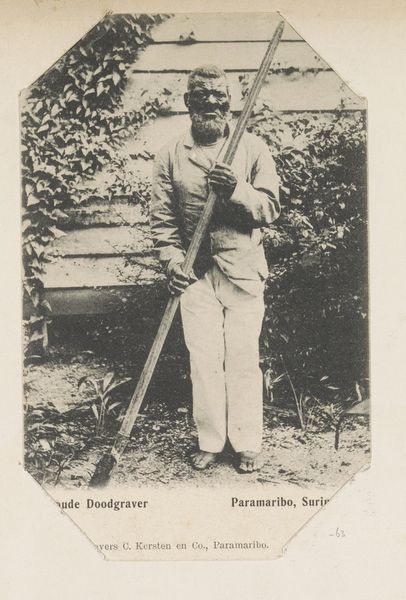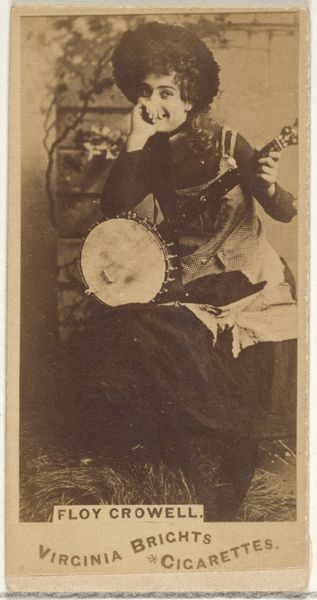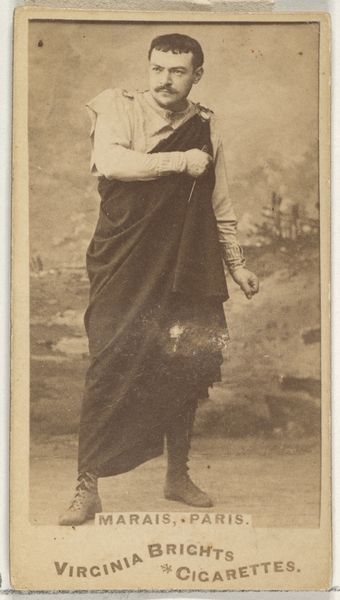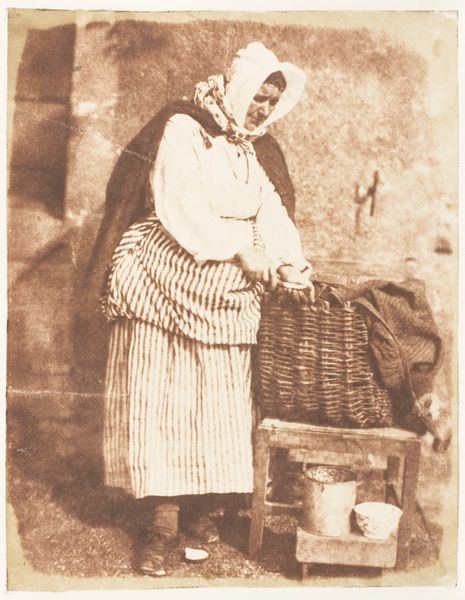
daguerreotype, photography, gelatin-silver-print
#
portrait
#
print photography
#
daguerreotype
#
photography
#
historical photography
#
romanticism
#
gelatin-silver-print
#
genre-painting
#
realism
Copyright: Public Domain
Curator: This is "Newhaven Boy," a photographic portrait created between 1843 and 1847 by the pioneering Scottish duo, David Octavius Hill and Robert Adamson, currently residing here at The Met. Editor: It’s surprisingly melancholic. The sepia tones wash over this young man sitting beside what looks like an oversized willow basket, lending the scene a solemn air. Curator: The basket’s quite key. It's filled with golf clubs, subtly referencing the lucrative golf-club making industry of Newhaven, just outside of Edinburgh at that time. Hill and Adamson were consciously using photography to document the lives and trades of ordinary people. The photograph embodies the archetype of "laboring children" and also gives us hints about the impact of "gentrification." Editor: Seeing the woven construction of that basket is fascinating, especially how its physical presence almost dwarfs the boy. It makes you think about who crafted that basket and how such crafts became deeply tied to place and economy. Curator: Precisely. Consider how the shadows, muted by the daguerreotype process itself, shape our perception of the boy's place in the social landscape of 19th century Scotland. Look closely, and you’ll notice a slightly world-weary gaze, yet he has a direct engagement with the camera that pulls you in. There are some universalities: The image feels timeless. Editor: That’s the crux of it for me – the process. Early photographic techniques like this were groundbreaking and extremely material-dependent. The light, the chemicals, the paper… It’s all tangible and reactive. Capturing the "real" at a remove is the first moment for photography and visual documentation for a certain societal memory. Curator: It's also worth contemplating the potential romanticization, even perhaps a picturesque re-imagining, of rural life common during the Romantic era, through this technological new medium. There are echoes of genre painting within this frame. Editor: A very pertinent observation! The constraints and affordances of early photography influenced what and who was captured, reflecting back on the subject and the societal contexts framing that creation, so beautifully illustrated here by the weaving process both on the basket and within society itself. Curator: Well said! This piece allows us to glimpse into both a specific time and a persistent fascination with youth and labor. Editor: Indeed, it encourages one to think more critically about labor conditions throughout history, and this young person's placement in history and the world today.
Comments
No comments
Be the first to comment and join the conversation on the ultimate creative platform.

